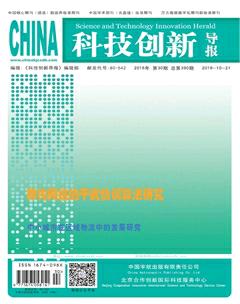微納結構的載能離子制備、調控及其機理研究年度報告
張苗++王雪林++魏星
摘 要:以粒子束技術為基礎的材料制造技術,在材料和半導體器件的發展中起著舉足輕重的作用,芯片性能的提高將更多地依賴于粒子束與微納物質作用及其精確調控技術。目前,離子注入技術最成功的應用領域是半導體工業,其被廣泛應用于半導體源\漏、阱摻雜工藝中;另一方面,在微電子、光電子領域的前沿-SOI技術領域,離子注入技術同樣獲得廣泛應用,例如:采用氧離子注入合成SOI材料并利用缺陷離子實現對其絕緣埋層厚度的精確調控,氦-氧多種類離子注入合成SOI納米結構等。此外,為了推動微電子技術沿摩爾定律繼續發展,新型硅基應變材料,如,絕緣體上應變硅和絕緣體上應變鍺硅等,由于具有比Si高的多的載流子遷移率以及同傳統的Si器件工藝兼容,因而得到研究領域和產業界的高度重視。其材料制備關注的焦點在于利用離子注入引入納米孔層對異質外延應變材料應力釋放,實現應力轉移,最終獲得以上新型硅基應變材料。總之,對離子注入合成納米尺度材料的機理進行研究,探索半導體材料離子注入原子的沉淀分解、擴散與成核長大等物理效應與演變機制,以及粒子束對材料應變的形成、應變釋放的作用對新型半導體材料合成具有重要的指導意義。高能離子束與光電絕緣體功能材料的相互作用是一個具有很強應用前景的課題。具有一定能量的離子束,轟擊光電功能材料表面,輻照離子通過損傷、缺陷機制,誘導特定區域的折射率發生變化,在表面形成光波導結構。根據注入離子的能量、方式的不同,可以分為離子注入、快重離子輻照、聚焦質子束。我們綜合利用上述手段在多種晶體材料中晶體上實現波導結構,研究表明離子輻照技術作為一種非平衡的物理方法,注入離子的數量小,而且多數離子都位于注入射程的末端,在波導層中幾乎沒有摻雜效應,能夠保持晶體的原有組分和結構,通過適當的熱退火處理,波導層中的色心和點缺陷可以被消除,使得波導層可以保持原有的光學性能,是一種“晶體波導”。通過系統的研究,在多種晶體上制備出性能穩定、導模質量好的光波導,實現波導中光學倍頻和激光輸出,并通過理論分析對其輻照機理進行了探討。這對于無源/有源微納光子器件的研究奠定了實驗和理論基礎。
關鍵詞:離子束 絕緣體上硅 光波導
Control and Mechanism of Synthesizing Micro-nano Structures by Ion Beam —— Annual Report
Zhang Miao1 Wang Xuelin2 Wei Xing1
(1.Shanghai Institute of Microsystem and Information Technology, Chinese Academy of Sciences; 2.Shandong University)
Abstract: Materials fabrication process based on ion beam technology plays an important role in the development of materials and semiconductor devices. Nowadays, the most successful application of ion implantation technology is in semiconductor industry, and it is widely used in source/ drain and well doping. On the other hand, ion implantation technology is also widely used in the leading edge SOI technology; for example, O+ implantation or O+/He+ co-implantation are used to fabricate SOI nano-structures. Furthermore, for developing the IC technology following the Moores law, strained materials such as strained Si on insulator and strained SiGe on insulator gain attentions from researchers and companies due to its higher carrier mobility than Si and process compatibility with Si technology. The key issue for fabricating these materials is realization of strain relaxation with nano-cavity layer induced by ion implantation. In summary, investigating the mechanism of synthesizing nano-scale materials, exploring the precipitate decomposition, nucleation, growth and evolution mechanisms of implanted ions, and studying the stain relaxation effects play a guiding role in fabricating new semiconductor materials. Interaction of high-energy ion beam with optical functional materials is a highly promising subject. Damages and defects caused by ion irradiation induced refractive index changes in a specific area to form the optical waveguide structure in the surface of optical functional materials. Depending on the energy of the implanted ions and methods, ion irradiation can be divided into ion implantation, fast heavy ion irradiation and focused proton beam. As a non-equilibrium method, very small amount of ions are introduced in the crystals; in addition, most ions distributed at the end of the injection range. The doping effect can be avoided in the waveguide layer, which maintains the original composition and crystal structure. The color center and point defect caused by ion irradiation can be eliminated by introducing proper thermal treatment, which keeps the original optical properties of waveguide layer. Based on several kinds of crystals, we fabricated optical waveguide with stable properties, achieved optical frequency multiplication and waveguide laser output and discussed the irradiation mechanism. These works laid the experimental and theoretical basis of investigation on passive/active micro-nano photonic devices.
Key Words: Ion beam; Silicon on lnsulator; Optical waveguide

